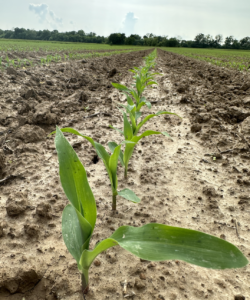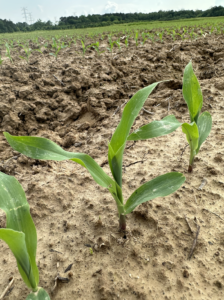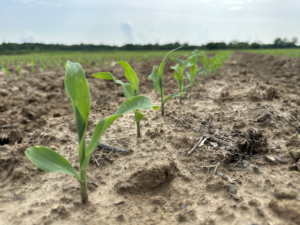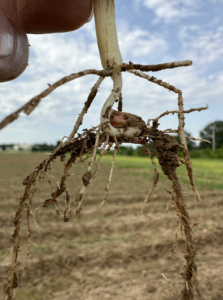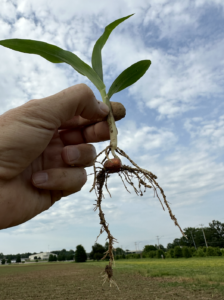You never get a second chance to make a first impression. That popular saying could just as easily apply to planting corn. It’s impossible to recover from planting time mishaps. Don’t believe it? Try this. Walk into a cornfield where plants have recently emerged. Identify a plant that’s shorter than the rest (some call these runt plants). Tie a ribbon to the small plant and watch it all season. That plant will likely never catch up to the size of its peers. It may not even produce a harvestable ear. But it will drain water and nutrients. My friend Steven Abracht – 11-time NCGA national yield contest winner – famously called these plants weeds. Studies show corn plants that emerge 24 hours later yield 21 bu/A less. During a text poll conducted at a Commodity Classic event, 55% of growers admitted that emergence is the time when you can lose the most yield. Better stated, this is the time when a farmer’s decisions can have the greatest impact. For corn, a great first impression means having all the plants emerge quickly from the soil, properly spaced and at approximately the same time. On my #Plant23 high-yield corn plot, plants jumped out of the soil in unison. Corn emerged in 5 days (109 GDUs). You could “row it” in the first week. On day 10 (photos below), we are already at V2. Here’s how I managed the crop to make a great first impression:
- Waited for optimum soil conditions. We planted on May 4. The soil surface was moderately dry and the seed was placed in moist, not wet soil. When I grabbed a handful of soil and closed my fist, it did not ball up.
- Planted 2 inches deep. By waiting for optimum soil conditions, I was able to plant at the right depth for the type of soil we have. When soils are cold and wet, shorter depths may be required. At 2” depths, we saw uniform emergence and consistent plant height.
- Soil temperature was 68 degrees. This is very warm, as corn only requires 50 degrees for germination. I want plants to blast out of the ground and maintain their vigor. They did just that; plants emerged within five days.
- While we used a new planter, we were out of the tractor quite a bit. Not because of breakdowns, but to verify planting depth and seed spacing. Singulation and population data on the monitor was spot-on, but I still wanted to verify, so we dug up seeds. As plants have emerged, singulation looks exceptional.
- Fed them well. Micronutrients impact early plant performance, so the corn was fed Huma Gro® Max Pak and Calcium. For NPK, we applied Huma Gro® Super Nitro®, Super Phos® and a NPK blend that included K, along with X-Tend®.
- The process of germination and breaking through the soils requires energy. To boost energy levels, we applied the humic-based growth manager, Huma Gro® Breakout®.
Check out the secondary root development of my corn on day 10, treated with Zap® and Breakout®. We’re already stimulating microbial activity in the soil and providing lots of plant energy.
Yield is king when it comes to encouraging farmers to try biological products. In a recent survey, when asked for reasons to try biologicals on their farm, 82% listed increased yield. That’s well above the 49% listing nitrogen efficiency. About one-third listed improve soil health, root system growth, drought tolerance and reducing fertilizer rates. So while biologicals may offer several benefits, the key attraction is yield.
May is National Beef Month. US cattlemen produce over 21% of the world’s beef supply – 28 billion pounds annually – ranking #1 in the world. And they do it with only about 8% of the world’s cattle herd. The US beef industry is highly diverse. While many consumers may perceive the modern US beef industry as sprawling ranches and highly populated feed yards, 85% of America’s 882,000 beef producers raise under 1,000 head. In fact, the average herd size in America is just 44 cows. Cattle represent the ultimate hobby farm. Many sundowners raise cows for the love of it, and show rings make cattle the ideal 4-H project. Arizona’s 7,000 cattle operations produce just shy of one million head annually. It’s hardly a coincidence that Beef Month coincides with the start of grilling season. Beef is the most popular food to place on the grill. Currently, the beef business is thriving. A producer in Nebraska recently reported receiving $3.07 per pound for 500-pound steers. As cow inventories approach historic lows, producer prices should remain strong.
For the regen ag movement to prosper in row-crop markets, it needs a big economic push. A driver with the ability to separate regen grown crops at grain terminals and provide farmers access to markets. Like from the world’s biggest oilseed processor. That’s the push Brazilian farmers are getting from Bunge. The St. Louis-based multinational launched a program to aid in the transition to low-carbon agriculture, offering technical support, tools, products, and services, and most importantly, access to a regen ag marketplace. So far, they’ve amassed 615,000 acres in the states of Bahia, Maranhão, Mato Grosso, Paraná, Piauí, and Tocantins. Additionally, a recent joint venture between Bunge and India-based agrochemical giant UPL provides field-level support and crop inputs.
Related Posts
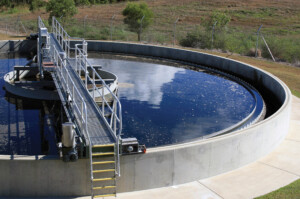
Bio Energizer, Micatrol & Bio Feed Reduce COD and Stabilize Wastewater Treatment for Plastic Producer
A plastic manufacturer in Taiwan needed a new process to efficiently treat elevated incoming chemical oxygen demand (COD) to comply with stringent EPA regulations for effluent discharge. The plant is an activated sludge treatment system with an influent of approximately 2,000 cubic meters per day (CMD) which is equivalent to approximately 530,000 gallons per day
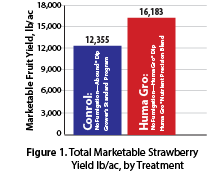
Univ. of Calif.: Huma Gro® Increases Strawberry Yields 30%
Huma Gro® Ultra-Precision™ Blend Plus Root Dip Increases Strawberry Yields 30%, Univ. of Calif. Conducted by: Surendra K. Dara, PhD, University of California Huma Gro® Products: Ultra-Precision™ Blend; plus root dip of Breakout®, Promax®, Vitol®, and Zap® OBJECTIVE The purpose of this research project was to evaluate how a special blend of fertilizer solution and

The Water Break Podcast, Episode 26: Master Plans—A Vision for the Future
“Where We Bridge the Gap Between Water Plant Operators and Engineers” In The Water Break Podcast Episode 26, Heather Jennings, PE, discusses Water and Wastewater Facility Master Plans with guest Devan Shields, Project Engineer at Sunrise Engineering in Fillmore, Utah (phone 435.562.4086). Mr. Shields develops water and wastewater infrastructure solutions that include master plans, designs,

